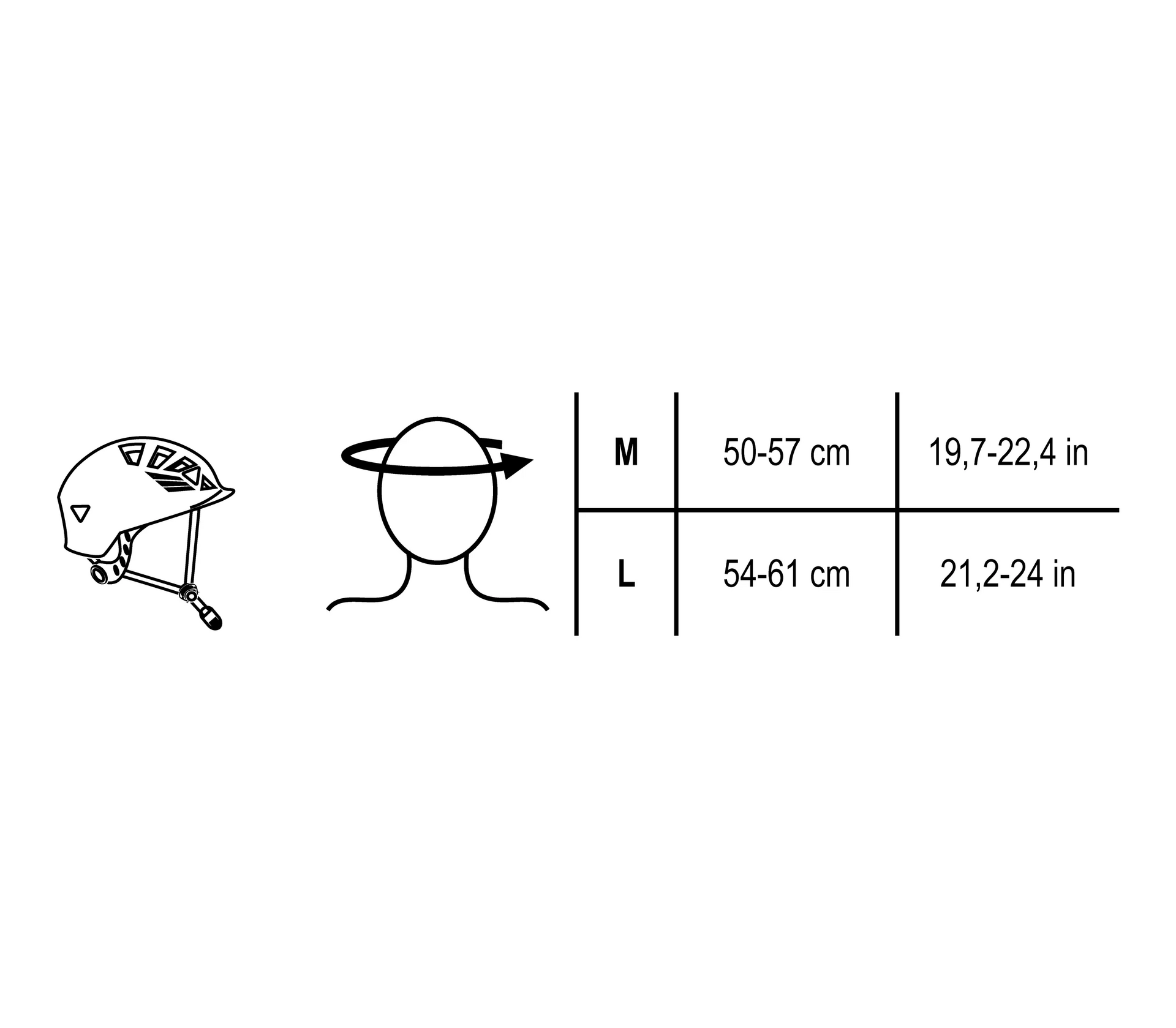PERFORMANCE OF THE HELMET
This helmet is designed for mountaineering only. It must not be used for any other sports, such as motor sports, winter sports or cycling. The protection provided by a helmet depends on the circumstances of the accident; wearing a helmet does not always prevent fatal accidents or long-term disability. This helmet meets the European standard 12492. The energy of impacts is absorbed by the partial destruction or damage to the helmet; all helmets that have been subjected to a severe shock must be replaced, even if there is no clearly visible damage. Users are also reminded that they must not modify or remove any of the original components, unless specified otherwise by the manufacturer, as doing so may damage the helmet. You must never add any parts or accessories to the helmet that are not recommended by the manufacturer. Unless specified otherwise by the manufacturer, do not apply any paint, solvents, adhesives or stickers to your helmet. When cleaning, maintaining or disinfecting your helmet, avoid using any substances that may damage the helmet or cause harm to the user, in accordance with the manufacturer's information and instructions.







